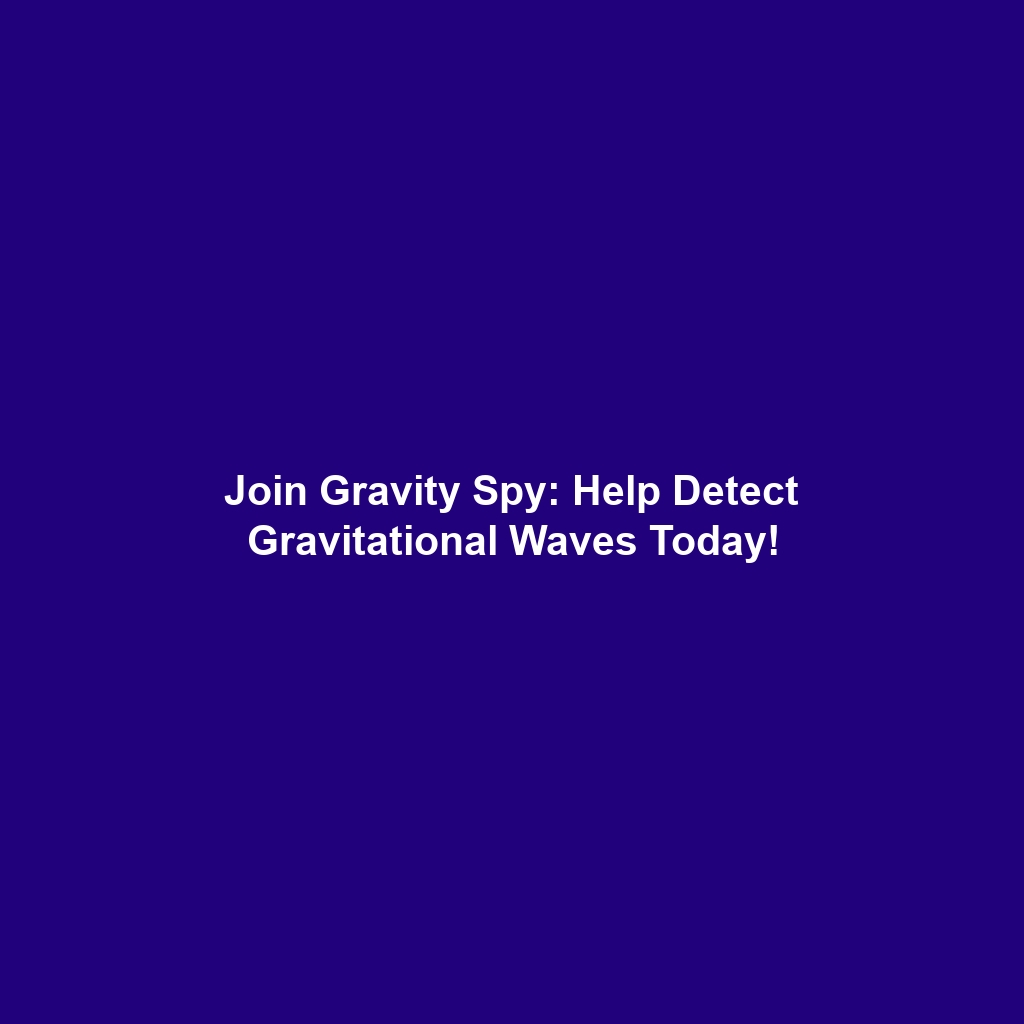Zooniverse Projects and Gravitational Waves: An In-Depth Exploration
Introduction
Zooniverse projects, such as Gravity Spy, provide a unique platform that allows the public to contribute to the scientific community by identifying gravitational wave signals. As gravitational waves represent ripples in spacetime caused by catastrophic astronomical events, the involvement of citizen scientists is crucial in analyzing vast amounts of data. Gravity Spy enhances our understanding of these cosmic phenomena and underscores the importance of public engagement in modern astrophysics. This collaborative approach has significant implications for the study of gravitational waves and the future of astronomy.
Key Concepts
Understanding Gravitational Waves
Gravitational waves are produced by some of the universe’s most violent processes, such as mergers of black holes and neutron stars. Detecting these waves allows scientists to gain insight into these monumental events, leading to breakthroughs in physics and astrophysics.
Role of Citizen Science in Gravity Spy
The Gravity Spy project exemplifies how citizen science contributes to gravitational wave research. Participants are trained to classify and identify transient signals in data collected from the Laser Interferometer Gravitational-Wave Observatory (LIGO). Their input helps scientists separate genuine gravitational wave signals from noise, significantly enhancing the accuracy of detections. This model of participation reflects a new paradigm in data analysis and scientific discovery.
Applications and Real-World Uses
The application of Zooniverse projects like Gravity Spy in the field of gravitational waves has transformative potential:
- Public Engagement: Engaging the general public in complex scientific analysis helps raise awareness and understanding of gravitational waves.
- Data Processing: Volunteers assist in processing large datasets, making scientific research more efficient and accessible.
- Education: Projects like Gravity Spy offer educational resources to participants, increasing interest in STEM fields.
This collaborative spirit not only democratizes science but also accelerates the pace of discoveries within the category of gravitational waves.
Current Challenges
Despite the significant contributions of Zooniverse projects, there are challenges to be addressed:
- Data Overload: The sheer volume of data generated by gravitational wave detectors can overwhelm citizen scientists.
- Signal Noise: Distinguishing between real gravitational waves and noise presents ongoing difficulties.
- Training and Recruitment: Ensuring participants are adequately trained remains a challenge for project sustainability.
These issues reflect broader dynamics in citizen science, impacting the study and application of gravitational wave research.
Future Research and Innovations
Looking ahead, the evolution of projects like Gravity Spy is poised to enhance gravitational wave science:
- Machine Learning: Future integrations of machine learning could streamline data classification and improve signal identification accuracy.
- Expanded Public Participation: Innovations may include more intensive training programs to prepare a larger volunteer base.
- Multimessenger Astronomy: The coupling of gravitational wave detection with electromagnetic signals may provide deeper insights into cosmic events.
Conclusion
In summary, Zooniverse projects like Gravity Spy are not only integral to the identification of gravitational wave signals but also exemplify the power of public engagement in scientific research. By fostering a collaborative environment, these initiatives enhance our understanding of the universe. The future looks promising as advancements in technology and participation methods continue to evolve. To learn more about gravitational waves and how citizen science is shaping the future of astrophysics, explore our other articles on gravitational wave detection and citizen science initiatives.

Leave a Reply